When Bradford’s Fountains Café closed in March 2023, there were public calls for it to be preserved. Bradford District Museums and Galleries collected some of its recognisable objects to create a display celebrating Fountains Café. These were installed at Bradford Industrial Museum in February 2025. Dr Lauren Padgett, Assistant Curator of Collections, who led the acquisition project and curated the new display, gives an insight into the behind the scenes work around it.
Like me, if you grew up in Bradford, you have probably heard of, if not visited, Fountains Café at some point. Paul and Mary Georgiou opened Fountains Coffee House in 1968 at Bradford’s John Street Market (later called the Oastler Shopping Centre). Affectionately known as Fountains Café, it had a close-knit set of regulars. Bradfordians remember being taken there as children (I certainly was), with many returning with their own families later in life. Three generations of the Georgiou family ran the business.
Following the COVID-19 pandemic and with the upcoming closure of the Oastler Shopping Centre, the Georgiou family decided to permanently close Fountains Café. After fifty-five years, it served Bradford one last time on 31st March 2023.
Prior its closure, History in Action undertook an oral history project to capture the community’s memories of Fountains Café. In 2022, Bent Architect Theatre Company was awarded a grant to create a new immersive theatre show – Fountains of Tales. Based on the History in Action oral history interviews, Fountains of Tales brought to life some of the café and market community’s characters and stories. In April 2023, a few weeks after Fountains Café closed, the show was performed by a brilliant community cast of Bradford actors within the closed café unit.
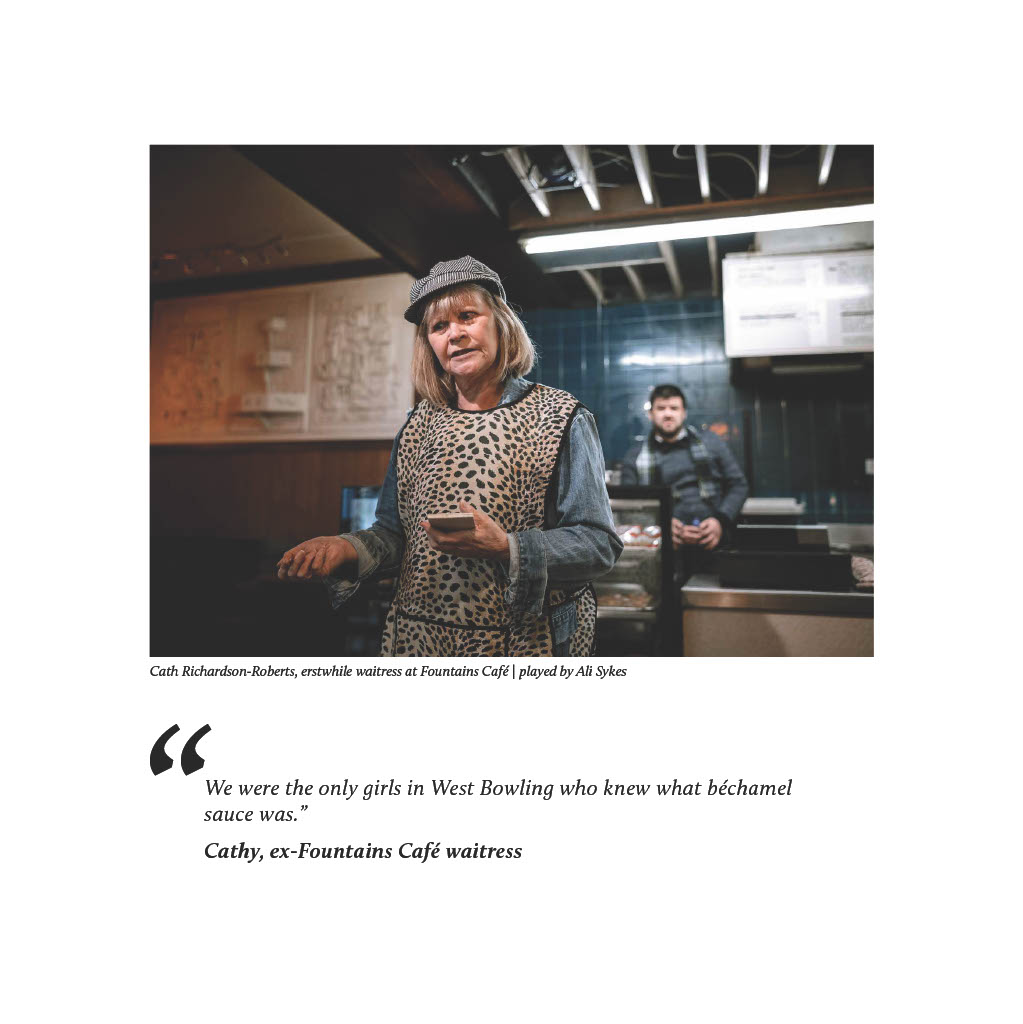
Around the time of Fountains Café’s closure, some Bradfordians were calling for this Bradford institution to be preserved. Upon hearing this, Bradford District Museums and Galleries’ senior management team asked me to contact the Georgiou family to see if any Fountains Café objects could become part of our collection. After positive conversations with the family and a supportive decision by our Collections Development Panel, it was agreed that Bradford District Museums and Galleries would collect a selection of recognisable objects with a view to display them. Bradford District Museums and Galleries is committed to collecting, exhibiting and interpreting the heritage of the Bradford District, using the objects within its collection to allow people across the District to tell their own stories.
I liaised with the Bradford & District Markets team who were happy to retain the objects at the closed unit for the time being. I got to work formalising the acquisition with the Georgiou family and coming up with a display plan. It took a bit of logistical planning to work out how and where the objects might be displayed – I think I measured the same wall a dozen times to be sure that everything would fit on it. As I shared ideas and draft layouts with colleagues and took their feedback onboard, display plans were refined taking the budget, display aesthetics and aspects around collections care and accessibility into consideration.
I contacted Jude Wright and Mick Martin of Bent Architect Theatre Company, who were happy for us to reproduce panels they had created. These had photos of the actors in character from the Fountains of Tales show and a quote from the History in Action oral history interviews. I was also put in touch with Ann-Marie of Clock Tower Studios who had created stunning illustrations of the interior and exterior of Fountains Café and allowed us to incorporate them into the display. Both were much welcomed additions to the display and really bring it to life.
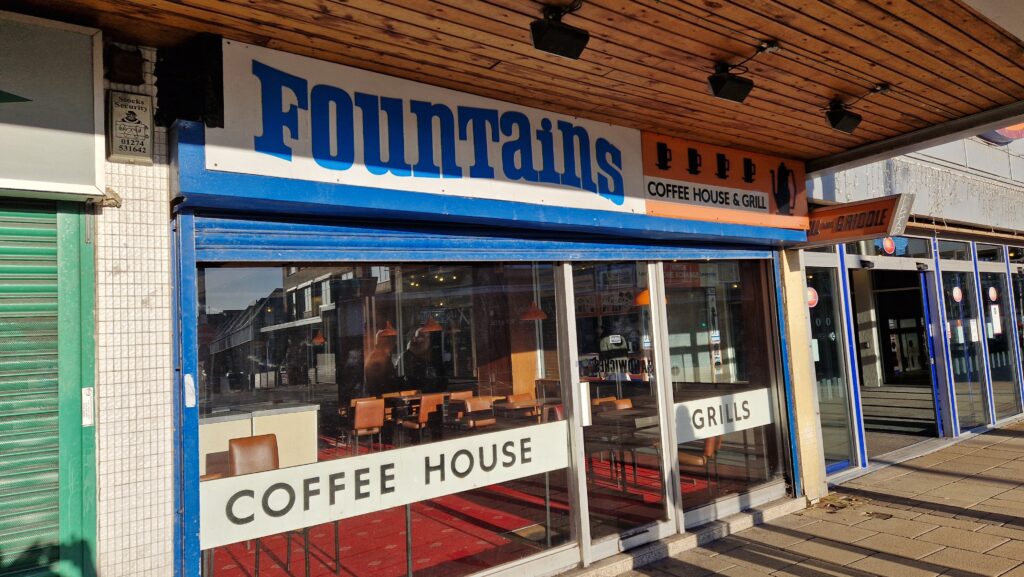
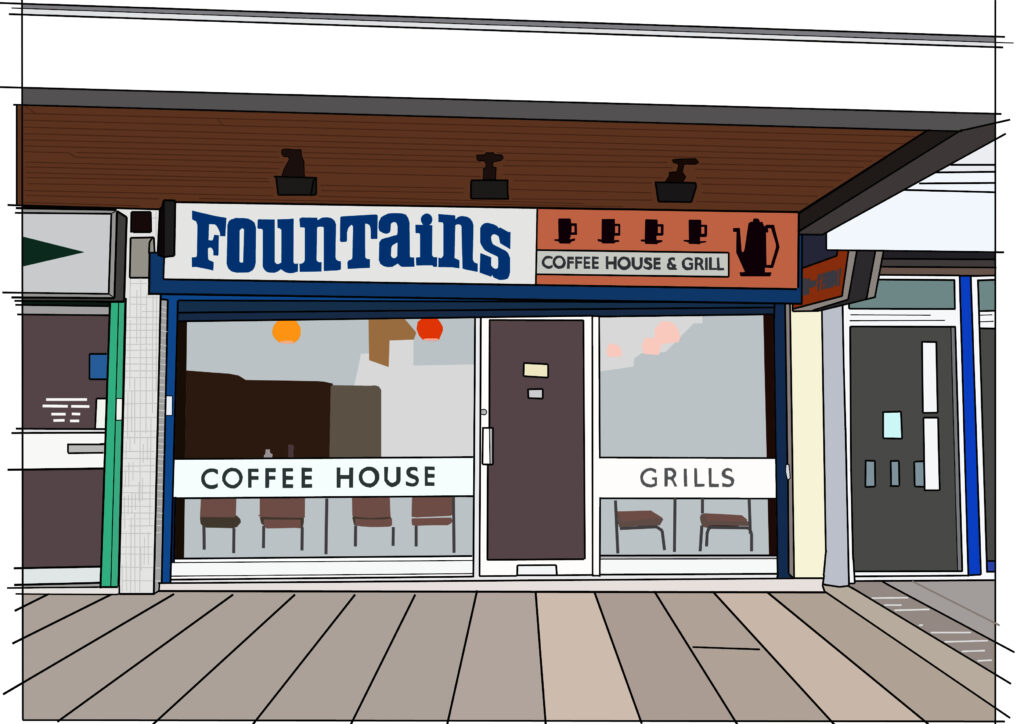
From November 2024, I started finalising the logistics. The display install was scheduled for February 2025 giving me a few months to pull everything together. Colleagues were booked for the object collection and the installation. The interpretation panel was drafted, peer-reviewed and finalised. I liaised with Bradford Council’s Design and Print Unit to design and print the panels. Paint and materials were ordered.
After making arrangements with the Bradford & District Markets team to access the closed café unit, on Wednesday 29th January 2025 several colleagues and I spent a few hours there carefully taking down the mural, painting and signage, and packing up crockery, a table and a set of chairs. Many passersby stopped to watch us; some enquired about what we were doing. A few even stopped to tell us about their memories of Fountains Café, which was lovely.
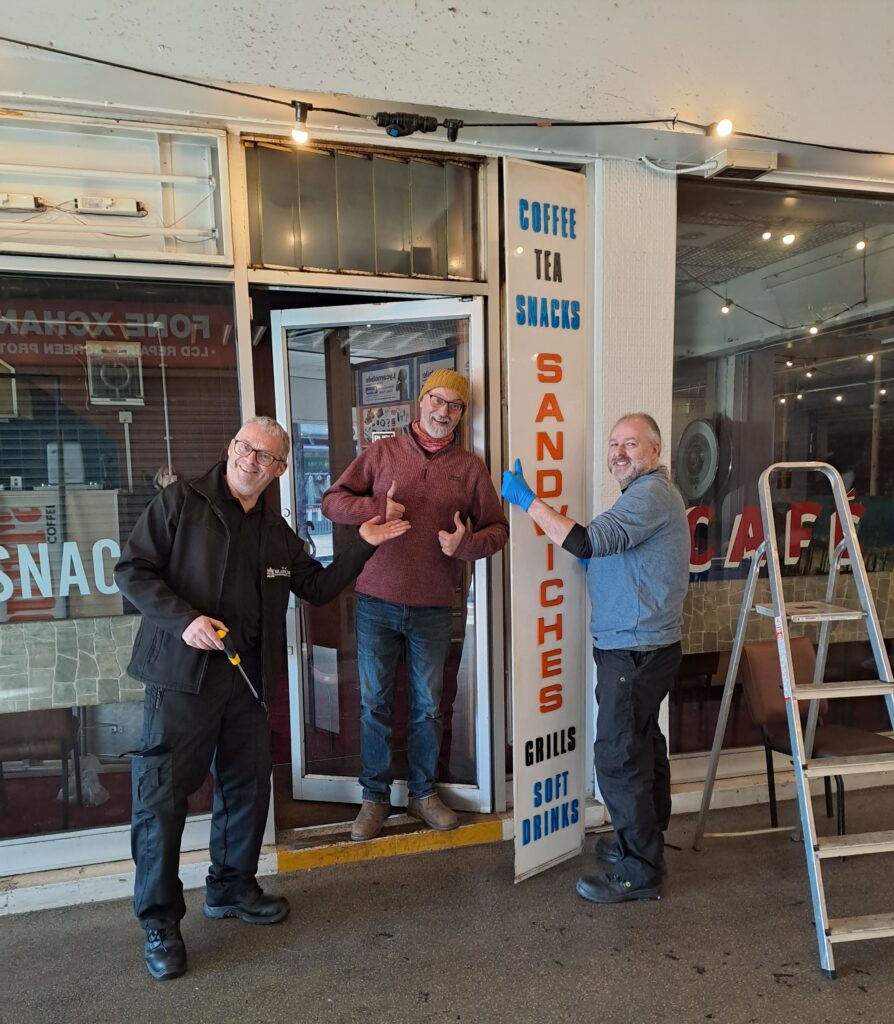
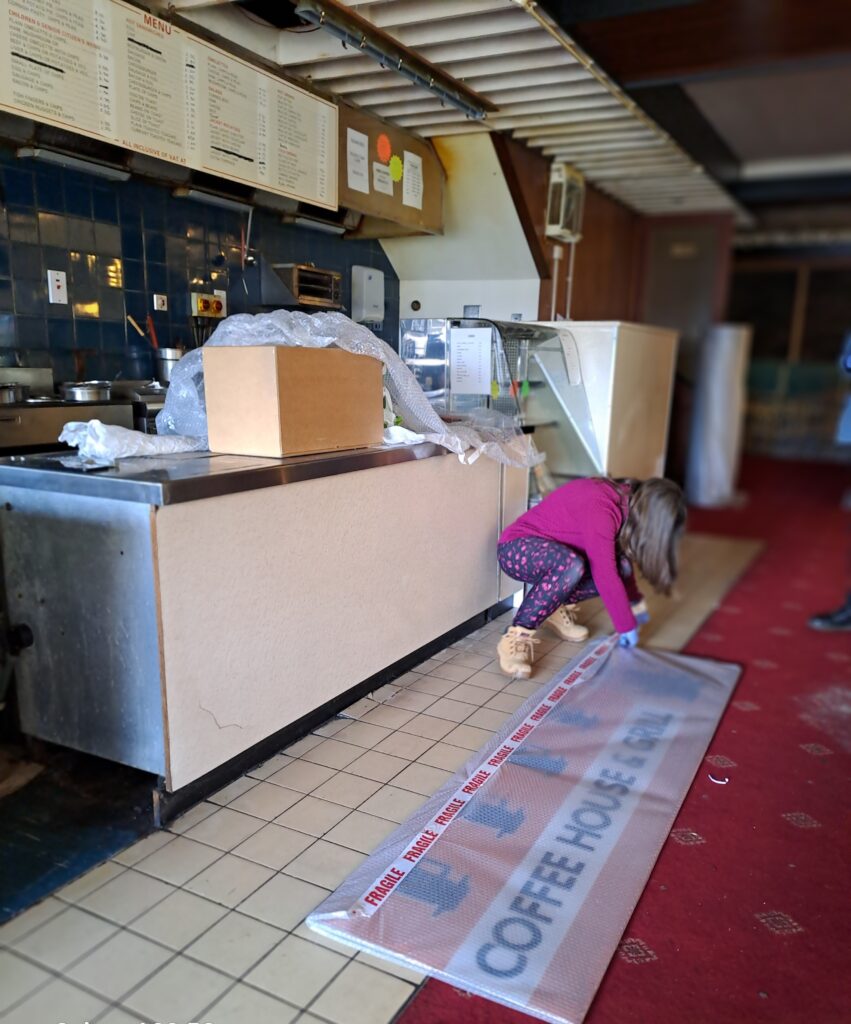
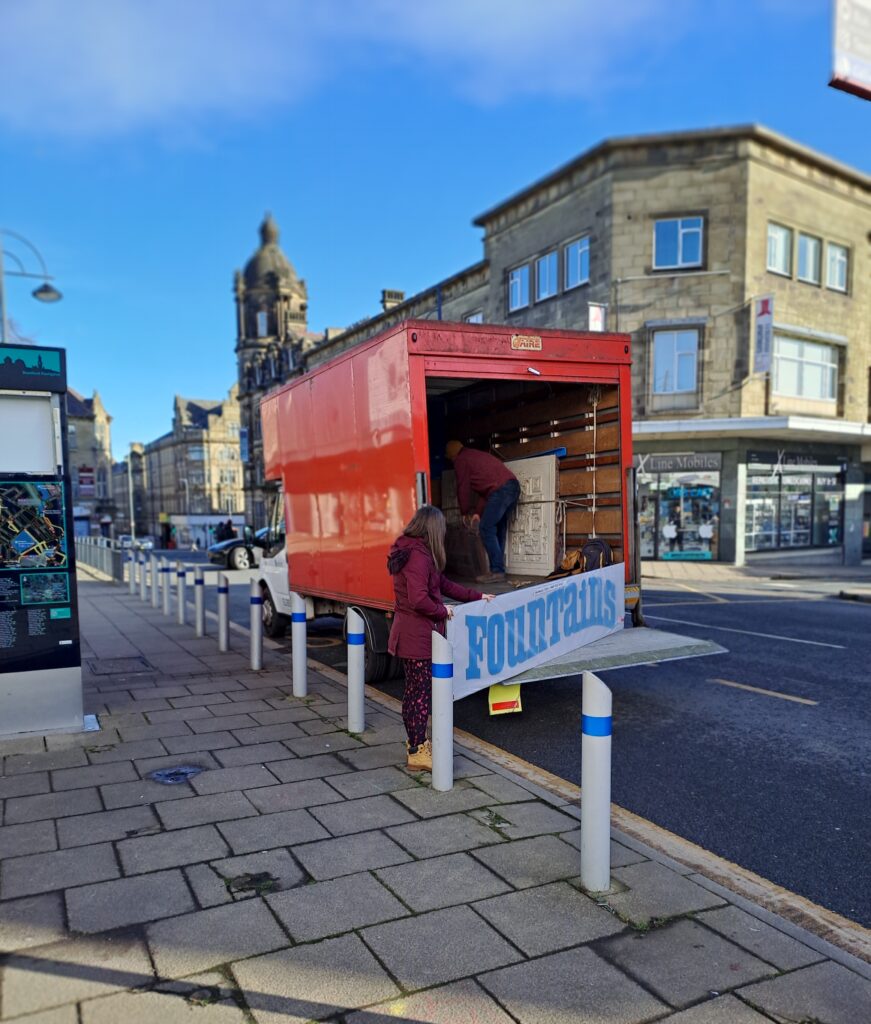

Once the objects were brought onsite to Bradford Industrial Museum, they went into temporary storage. Myself and my colleague, Dale Keeton (Conservation Officer) had a week or so of preparation. Dale had a cleaning challenge as some of the objects had been in situ inside and outside Fountains Café for decades, so naturally there were years’ of built-up dirt and dust to remove. Emma Longmuir, the other Assistant Curator, helped me paint the Café Gallery’s wall which the display would be installed on.

As part of Bradford District Museums and Galleries’ commitment to reducing our carbon footprint, back in Spring 2024 I had spotted some plinths and walls in one of Cartwright Hall’s galleries which was due to be decanted. These were saved to be reused in this display, and I adapted the display design and layout around them along with some panel stands already in storage. They worked perfectly in the end. I painted the stands, plinths and low walls baked bean brown and tangerine orange. As well as the relevant food-theme of the paint colours’ names, the colours leaned into the retro 60s/70s feel of the café, replicating the orange of the pendant lights and brown Formica walls.
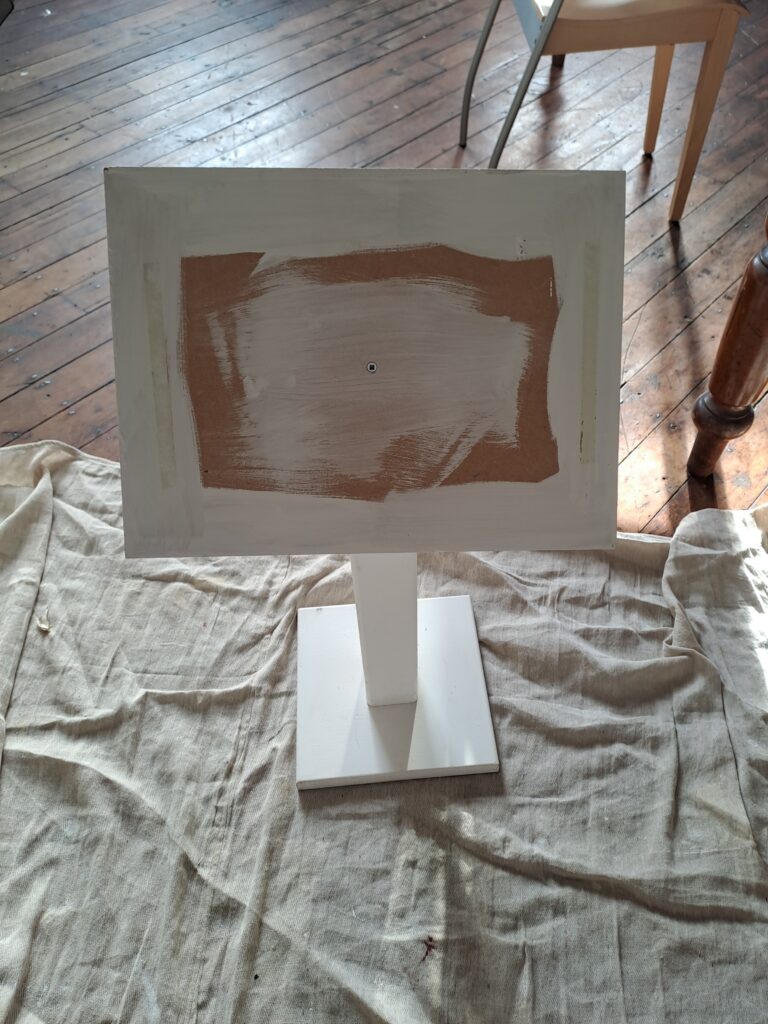
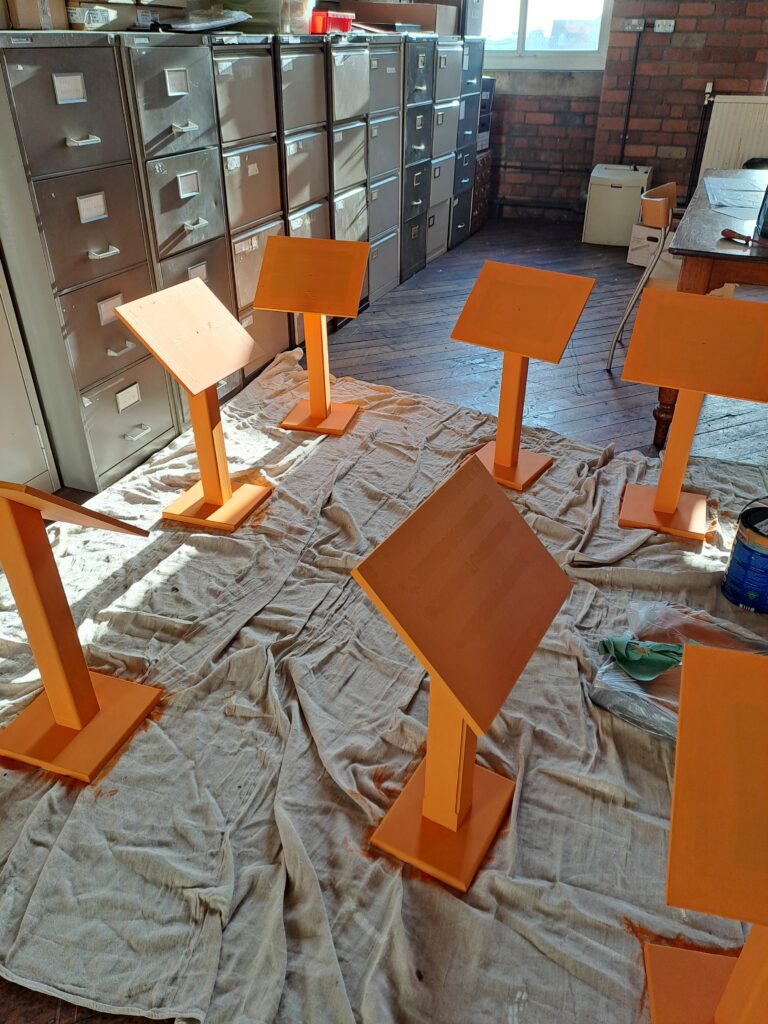
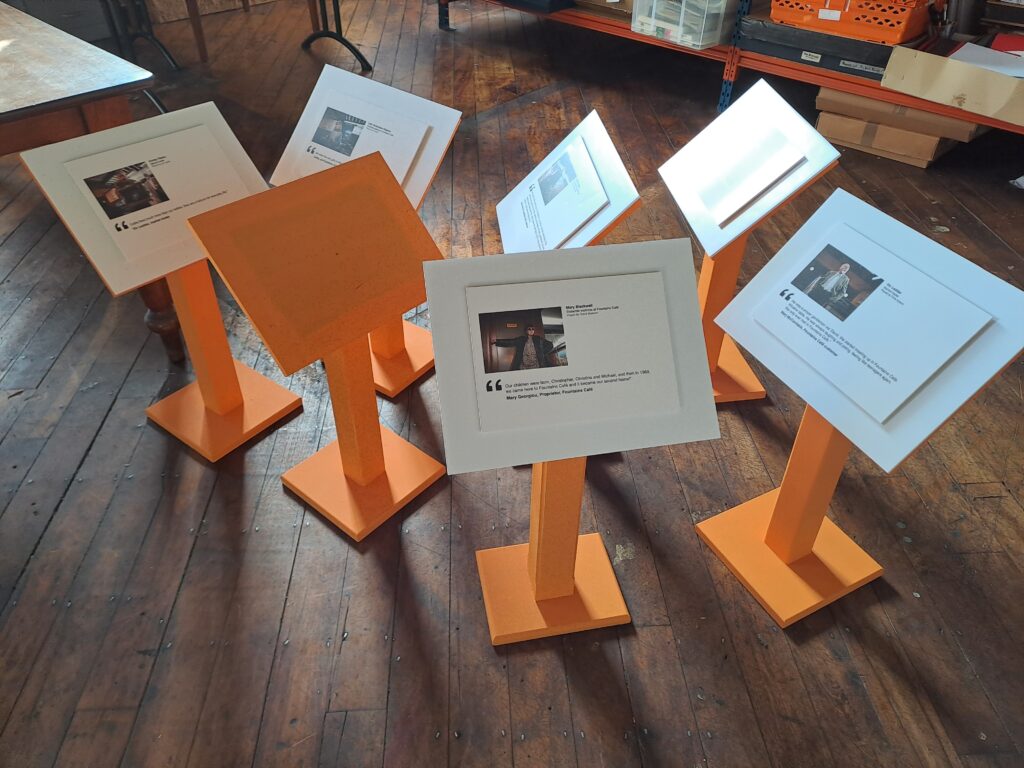
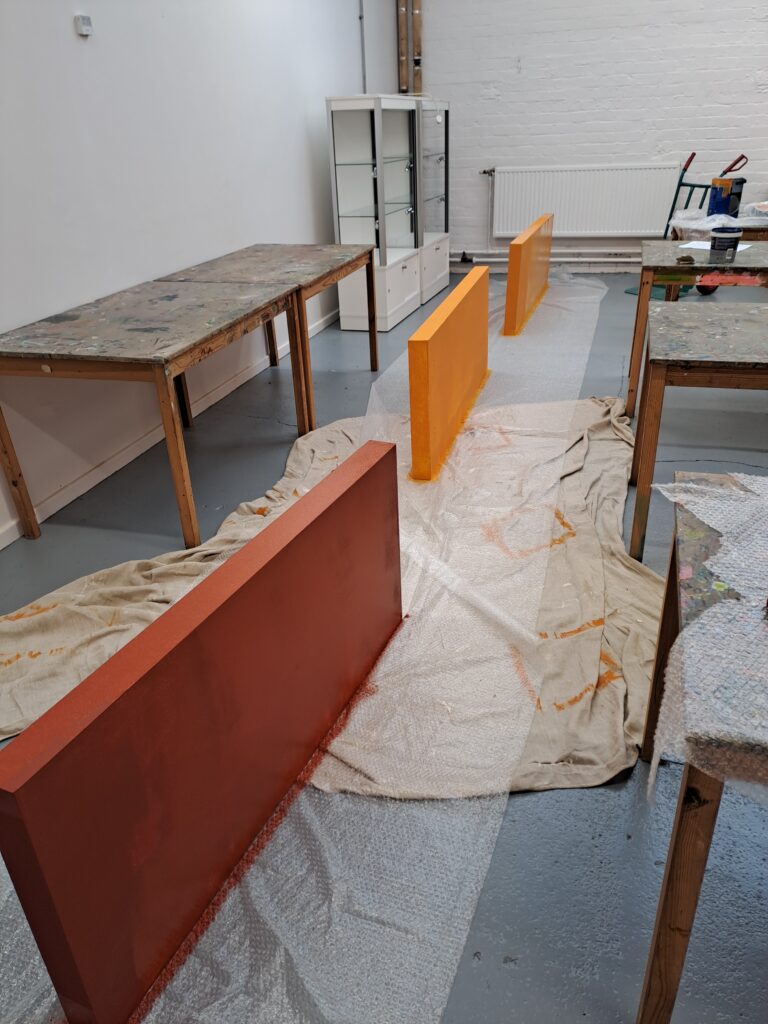
On Monday 10th February 2025, after months of planning, install week had finally arrived. Freelance technician Len Horsey had been booked to work alongside Dale and myself for two days to support the technical install of the large objects. It was a challenging install, but Len and Dale’s experience of exhibition installs and their ability to troubleshoot and improvise was invaluable. By the end of the second day, the mural, painting and signage were affixed to the wall with the graphic panels alongside them.
On the third day of the install, Dale and I then did some further cleaning, painting touch-ups and installed other elements. I put out the table and chairs, and set out the crockery with some fake food (again, reused from a previous exhibition). We secured the low wall around the table, put the floor plinths in place, positioned the panel stands and attached the cord barrier. A couple of final tweaks and the display was completed! Some staff, visitors and volunteers who could see the display as it came together over the three days were really interested in what was happening, with some sharing their fond memories of Fountains Café with us.
Photos and a video were posted on our social media channels and display details went live on our website. The display was featured in local (Telegraph and Argus), regional (Yorkshire Post) and national (BBC) news that weekend which was fantastic. Immediately, we received positive feedback from visitors who had come to see it. The Twentieth Century Society (a national charity campaigning to protect Britain’s modern architectural and design heritage) picked up on it too and highlighted the display in a social media post saying that it is “notoriously difficult to list or preserve intangible heritage of caffs, so this an interesting curatorial alternative”.
While all this feedback was fantastic to receive, I was keen to know what one group of visitors thought about it, the Georgiou family. I had kept in touch with the Georgiou family throughout the acquisition project and display planning process. I was thrilled to be able to share with them photos of the finished display and invite them onsite to see it themselves.
On Sunday 16th March 2025, members of the Georgiou family, including Mary (ninety-years-young) who had originally set up Fountains Café with husband Paul in 1968, came to Bradford Industrial Museum. It was an absolute pleasure to meet them and hear them reminisce about it. I was able to record a conversation between myself, Chris and Mary.
Mary and Chris have some lovely memories of Fountains Café, and kind words to say about the café patrons and people of Bradford. Mary talked about the other Bradford establishments her and her husband Paul ran in Bradford – you might remember some. They shed light on the café’s name and the artist who made the mural and painting. Chris talked about the regular patrons and the more famous ones over the years. Mary talked about the years of hard work and dedication that the family put into the café for three generations. What came out throughout the conversation was the love for the business and the café regulars. Some of the conversation has been edited into a video which can be seen and listened to below – it is well-worth a listen. And their verdict was in, the family love the display. Phew!
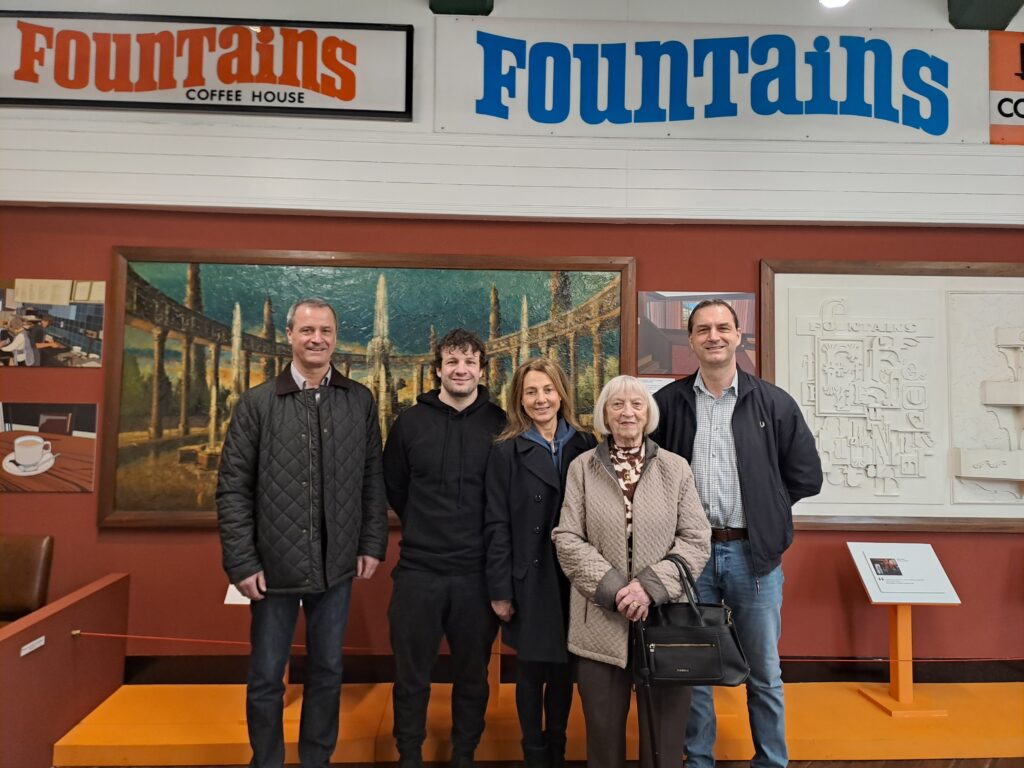
On behalf of Bradford District Museums and Galleries, we are so pleased to have been able to preserve and showcase this slice of Bradford’s culture – especially during Bradford’s City of Culture year! So come to Bradford Industrial Museum and pop into the Café Gallery to see the display, Fountains Café: Serving Bradford for Fifty-Five Years, for yourself.
Special thanks to the Georgiou family, the Bradford & District Markets team at Bradford Council, Bent Architect Theatre Company and Clock Tower Studios for their support with this display.
Listen to the interview below
2 Responses
Happy days 🥰
Good work …. I worked in Bradford, At ‘Rodway Publicity’ on Piccadilly between 1964 and 1969 so preferred the cafes in lower Bradford only ventured up to purchase film from Erricks or explore ‘Table Decor’ so never used the Fountains Coffee House. However it (the exhibit} will encapsulate the flavour of the time ….again WELL DONE.